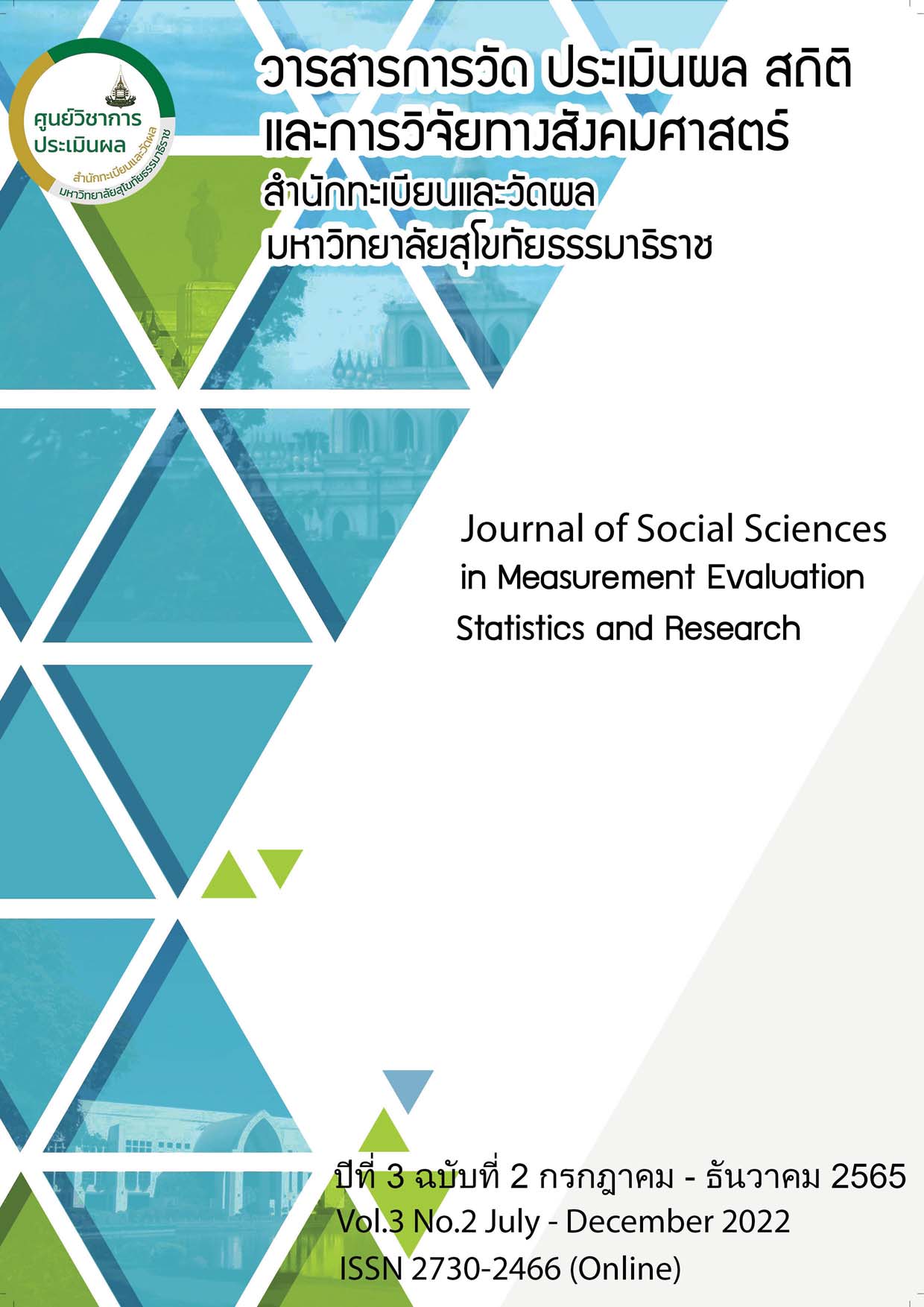Application of R Program for Test Score Equating based on Item Response Theory
Main Article Content
Abstract
Equating is a statistical technique frequently utilized in testing programs because administrations throughout multiple occasions and examinee groups can result in item overexposure and threaten the test's security. In reality, item exposure can be reduced by using several test forms; however, utilizing different tests would result in employing different score scales that assess the relevant construct at various degrees of difficulty. Equating scores from one test to another test is used to ensure fairness of tests. IRT models are implemented for equating various forms. Program R can equate scores from multiple test forms using the package called equateIRT. This article aims to present 1) fundamental concepts of linking and equating scores, 2) data collection designing for equating and 3) the application of R programming in equating test scores.
Article Details

This work is licensed under a Creative Commons Attribution-NonCommercial-NoDerivatives 4.0 International License.
ข้อความและบทความในวารสารการวัด ประเมินผล สถิติ และการวิจัยทางสังคมศาสตร์ เป็นแนวคิดของผู้เขียน มิใช่ความคิดเห็นของกองบรรณาธิการวารสาร จึงมิใช่ความรับผิดชอบของวารสารการวัด ประเมินผล สถิติ และการวิจัยทางสังคมศาสตร์ บทความในวารสารต้องไม่เคยตีพิมพ์ที่ใดมาก่อน และสงวนสิทธิ์ตามกฎหมายไทย การจะนำไปเผยแพร่ ต้องได้รับอนุญาตเป็นลายลักษณ์อักษรจากกองบรรณาธิการ
References
Battauz, M. (2015). equateIRT: An R Package for IRT Test Equating. Journal of statistical software, 68(7), 1 - 22. https://doi.org/10.18637/jss.v068.i07
Dorans, N. J., & Holland, P. W. (2000). Population Invariance and the Equatability of Tests: Basic Theory and The Linear Case. Journal of Educational Measurement, 37(4), 281-306. https://doi.org/https://doi.org/10.1111/j.1745-3984.2000.tb01088.x
Dorans, N. J., & Puhan, G. (2017). Contributions to Score Linking Theory and Practice. In R. E. Bennett & M. von Davier (Eds.), Advancing Human Assessment: The Methodological, Psychological and Policy Contributions of ETS (pp. 79-132). Springer International Publishing. https://doi.org/10.1007/978-3-319-58689-2_4
Hambleton, R. K., & Swaminathan, H. (1985). Item Response Theory: Principles and Applications. Springer Netherlands. https://books.google.co.th/books?id=jKFMUFI-e1UC
Hambleton, R. K., & Swaminathan, H. (1985). Test Equating. In Item Response Theory: Principles and Applications (pp. 197-223). Springer Netherlands. https://doi.org/10.1007/978-94-017-1988-9_10
Kolen, M., & Brennan, R. (2014). Test equating, scaling, and linking. Methods and practices. 3rd revised ed. https://doi.org/10.1007/978-1-4939-0317-7
Kolen, M. J., & Brennan, R. L. (2004). Test Equating, Scaling, and Linking: Methods and Practices. Springer. https://books.google.co.th/books?id=tusOwjb7LWsC
Kolen, M. J., & Brennan, R. L. (2014). Introduction and Concepts. In Test Equating, Scaling, and Linking: Methods and Practices (pp. 1-27). Springer New York. https://doi.org/10.1007/978-1-4939-0317-7_1
Livingston, S. A., & Kim, S. (2010). Random-Groups Equating with Samples of 50 to 400 Test Takers. Journal of Educational Measurement, 47(2), 175-185. http://www.jstor.org/stable/20778946


